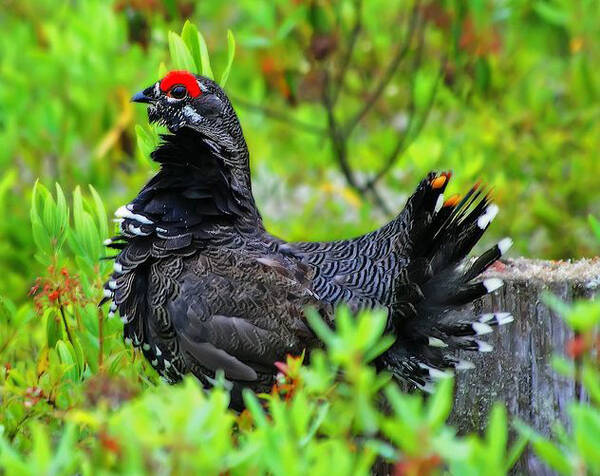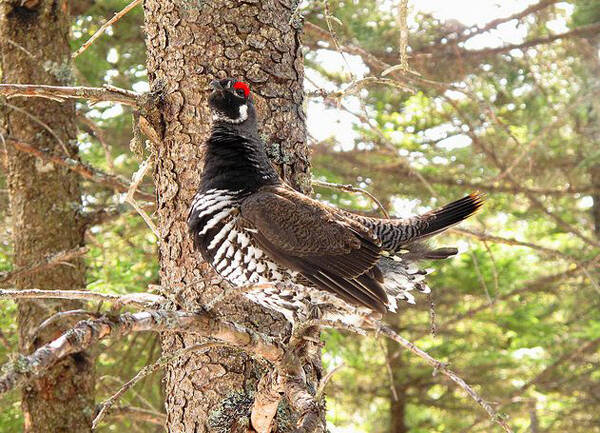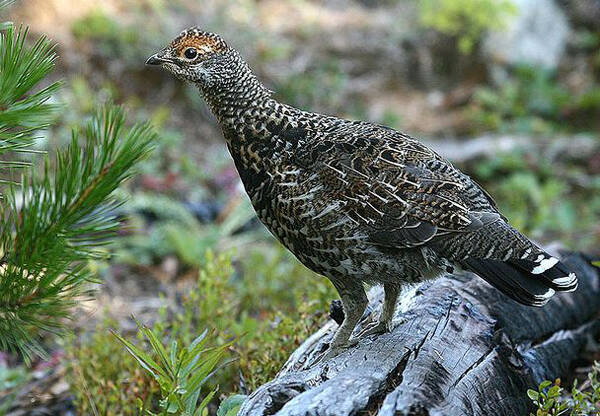Dendragapus canadensis
IUCN
LCBasic Information
Scientific classification
- name:Dendragapus canadensis
- Scientific Name:Dendragapus canadensis,Spruce Grouse
- Outline:Landfowl
- Family:Cocciformes P.family Falcipennis
Vital signs
- length:38-43cm
- Weight:450-650g
- lifetime:About 13 years
Feature
Male and female feather color is very different, male body size is also large, nostrils and feet have feathers, to adapt to the cold
Distribution and Habitat
Distributed in Canada, United States.
It inhabits coniferous forests, spruce forests and forests dominated by fir. In autumn and winter, it is sometimes found in deciduous forests. Prefer dense forests dominated by young trees, with well-developed middle layers of trees, and are also often found in areas with rich lingonberry groves and other low shrubs. This species lives at altitudes ranging from sea level to over 3,600 meters above sea level.
Appearance
The Fir tree chicken is 38-43 cm long, has a wingspan of 57 cm, and weighs 550-650 grams for males and 450-550 grams for females. The plumage varies slightly between the two, especially white on the tail and belly, while adult male fir-tree chickens are generally gray with black and white spots and exposed red skin above the eyes. Adult female spruce grouse mottled brown or mottled gray. Wings short round; The fourth primary feather is the longest, and the first feather is shorter than the second, almost equal to the eighth. The tail is very long, round or wedge-shaped, with 18 tail feathers, and the central pair is much longer than the outside; The tarsus is feathered to the toe and has a pectinate process on the toe in winter. Axillary very long, pure white or white mixed with black and brown; The beak is strong, and the upper beak of the male bird covers the lower beak like the beak of a falcon. Male and female feather color is very different, male body size is also larger. Both the
Details
The Fir-tree chicken (Dendragapus canadensis), also known as Spruce Grouse, has six subspecies.

Fir-tree chicken activity peaks in the early morning and late evening, pecking at grass. In the summer, this solitary activity on the ground, in the winter may gather in small groups of up to 30 individuals. They roost in trees at night and spend several nights in the same tree. In the morning and evening, it is often active in the larger forest clearing, forest edge and sunny slope grass or brush, and other time it is active in the forest beside the fallen wood, shrubland or open space in the grass.
Female chickens feed on the ground and stay in the nest at night. The chicks cannot fly, and the female will accompany the chicks at night. During the winter, female chickens rarely go to the ground, and many footprints in the snow are from male chickens.

In winter, the fir-tree chicken's diet consists almost entirely of the needles of pine and spruce. At other times of the year, buds, leaves, flowers and berries of other plants are also eaten, as well as some fungi, insects and snails. Seeks out and swallows grit, gravel, or gastroliths to help digest rough food. They have two appendices, which grow longer in winter, plus symbiotic bacteria, which they use to digest plants. Young birds mainly eat insects, and fungi are also important in the young bird's diet.

Listed on the International Union for Conservation of Nature (IUCN) 2012 Red List of Threatened Species ver 3.1 - Low Risk (LC).
Protect wild animals and eliminate wild meat.
Maintaining ecological balance is everyone's responsibility!








